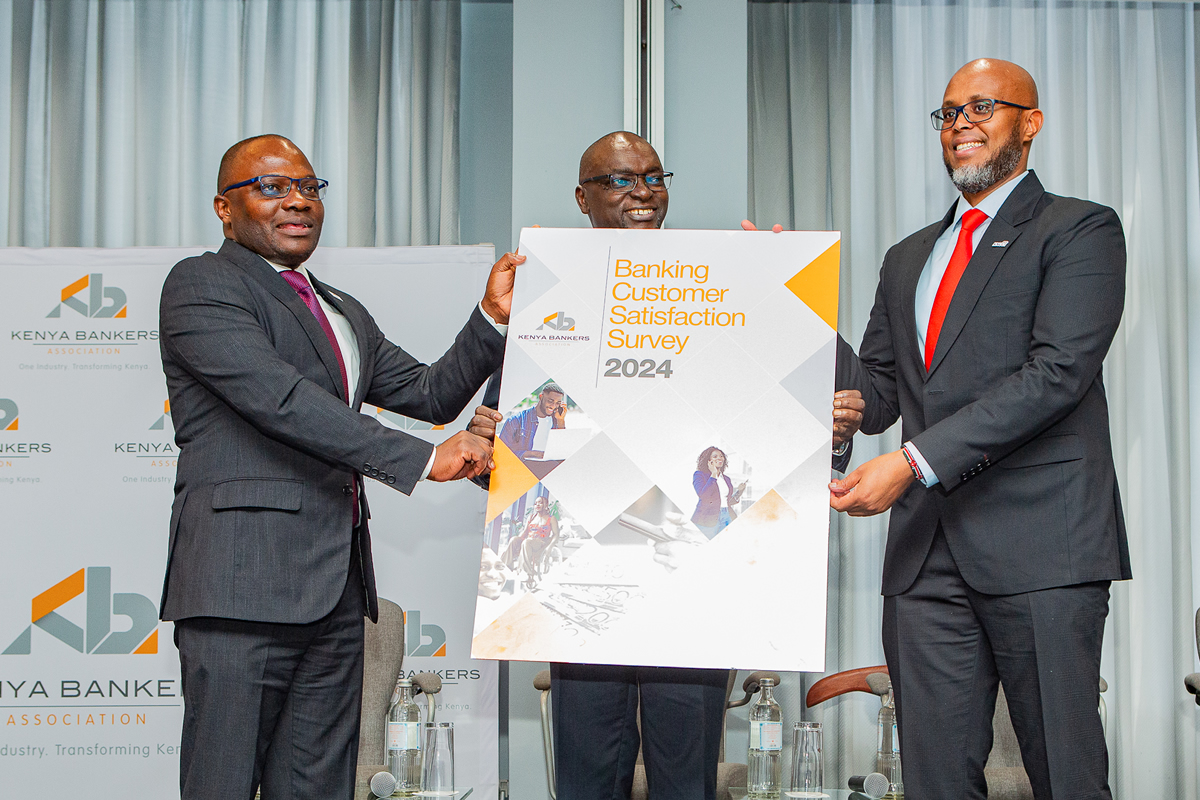Nairobi, 23rd August 2023: The banking industry’s total assets grew by 8.2 percent to KES. 6.5 trillion in 2022 from KES. 6.0 trillion in 2021, according to the State of the Banking Industry Report (SBIR) 2023 released by the Kenya Bankers Association (KBA) today.
According to the report, overall private sector credit double-digit growth momentum continued to be sustained, albeit with some moderation, partly reflecting the transmission of monetary policy tightening stance.
The report further shows that credit growth was stronger in 2022, growing by 12.5 percent in the 12 months to December 2022 with the stock of credit growing to KES. 3.4 billion by the end of December 2022. The report attributes the double-digit growth to the reinvigoration of private sector activity.
During a forum held today to unveil the report, KBA Chief Executive Officer Dr. Habil Olaka said despite shocks experienced in 2022, Kenya’s economy remained resilient, growing by 4.8 percent above the sub-Sahara Africa average of 3.9 percent.
‘’Banking industry developments in 2022 show that the industry registered impressive growth. Particularly for the deposit-taking microfinance banks, while their asset quality concerns posed challenges, there were notable operational efficiency gains that enabled profitability growth in the market segment,’’ said Dr. Olaka.
According to the SBIR, growth in bank lending was achieved without any detrimental impact on the asset quality as non-performing loan ratio declined to 13.7 percent in 2022 from 14.1 percent in 2021, reflecting an improvement in banking sector’s efforts to generate good quality loan book.
‘’As asset quality improved, the industry continued to increase its loan loss provisions to cover expected credit losses. Loan loss provisions rose by 16.2 percent to KES. 68.8 billion in 2022 compared to KES. 59.2 billion in 2021,’’ the report indicates.
The banking sector’s liability profile is primarily driven by domestic deposits with deposits accounting for 87.3 percent of total liabilities in 2022, a slight decline in the proportion from 89.9 percent in 2021.
Meanwhile, the industry on average maintained adequate capital buffers well above minimum statutory regulatory requirements. In 2022, the ratio of total capital to risk-weighted assets edged slightly downwards to 19.0 percent from 19.5 percent in 2021 against a statutory regulatory minimum of 14.5 percent.
Total operating income in 2022 sustained its growth trajectory, rising by 17.7 percent to KES. 740.4 billion from KES. 628.5 billion in 2021 while the operating costs also rose driven by interest expenses and general administrative costs. Total operating costs rose by 13.4 percent (to KES. 571.9 billion) in 2022 driven by a rise in interest expenses on borrowed funds, deposits, and placements which more-than doubled in the year, rising by 118.3 percent, and a 38.3 percent increase in the general administrative costs.
Banks’ aggregate cost-to-income, a proxy of efficiency, improved with costs absorbing 56.7 percent of the incomes in 2022 compared to 58.4 percent in 2021. The average banking sector’s average funding costs rose marginally to 3.1 percent in 2022 from 2.9 percent, a trend reflected across all bank categories, driven by tightening monetary conditions in the economy.
In terms of profitability, the total pre-tax profits rose by 23.0 percent to KES. 241.52 billion in 2022 from KES. 196.44 billion in 2021. The assets of deposit-taking microfinance banks continued to moderate having contracted by 4.8 percent to KES. 70.4 billion in 2022 from KES. 74.0 billion in 2021. Similarly, the net loans and advances to customers further contracted by 1.9 percent to KES. 39.3 billion from 40.1 billion in 2021.
The Asset quality of deposit taking microfinance banks continued to deteriorate to 14.5 percent in 2022 from 13.7 percent, as the coverage ratio also edges further downwards to 2.3 percent in 2022, from 14.8 percent as of 2021, according to the report.
The sector’s total liabilities continued to edge downwards but its structure remained stable with customer deposits – the deposits-to-liabilities ratio – remains dominant at 75.4 percent of the total liabilities, while borrowing and other liabilities accounted for 15.1 percent, and 9.5 percent respectively.
Overall, the total income of the sector contracted by 1.6 percent to KES. 13.2 billion compared to a 2.3 percent growth it registered as at end of 2021 while total expenses edged upwards, albeit marginally from KES. 12.9 billion in 2021 to KES. 13.1 billion in 2022.
According to the report, the banking industry outlook remains clouded by several interconnected risks that include persistent inflationary pressures, the effects of tighter monetary policy conditions on credit flows and by extension economic activity, the tax laws in the Finance Act 2023, sustained depreciation of the Kenya Shilling versus the major currencies, and concerns of debt sustainability amidst upcoming external debt maturities.
Access Full Report Here: State of the Banking Industry Report 2023
Media Contact
Dr. Samuel Tiriongo
KBA Director of Research and Policy
Email: stiriongo@kba.co.ke
Phone: 0722949185



